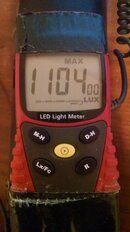MikeRD03
Registered
To use Bobby's example, 4000lm light with 120* angle is equivalent in penetrating power and intensity as a 2000lm light with a 60*angle
I am sorry, but you and Bobby are wrong. The surface is a squared number, so equivalent brighness/penetration of a 4000 Lumen/120° light would be 2000 Lumen with 102° and not 60°! Or said other wise - for double angle you need four times more light! (2²) The reason why video light are Lumen monsters.
And lux is always measured where the light comes out of the lighthead at 1m. So no problem here. But many light makers are lacking of this important number, so you should ask for it and don't let yourself fouled by accepting sayings like Lux ist not important. ;-)
Of course numbers can not describe the light distribution of a torch, but comparing Lux, Lumen (real) and full angle (50% brightness to 50% brightness) you have an idea in what direction a light is going. But most lights a lacking of all or at least one of these numbers.




